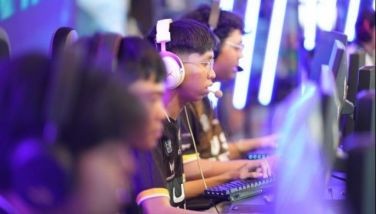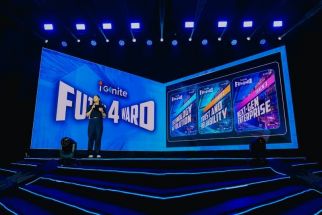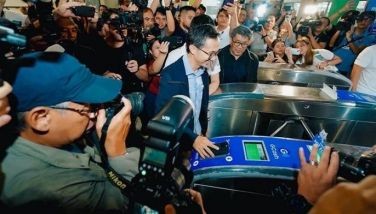Best practices in dual training
Last Thursday at Marriott Hotel, the German-Philippine Chamber of Commerce and Industry (GPCCI) handed out the 2015 Vocational Training Awards as part of the K to 12 Plus Project. The awards, categorized into Motivation, Cooperation, and Innovation, reward companies and schools doing dual training.
The board of judges was composed of Tristan Loveres of GPCCI, Marta Hernandez of TESDA, Ramon Escueta of the Philippine Chamber of Commerce and Industry (PCCI), Apolinar Aure of PCCI, Concisa Sudhoff of CS Garment, and Marjorie Mendenilla of the MFI Foundation.
The winner for Motivation was Punlaan School, which has been implementing a Dual Training Program in Food and Beverage Services since 1993, producing more than a thousand graduates, all of whom underwent 12 months of in-school training and 12 months on the job in partner hotels and restaurants. All their graduates were employed immediately after graduation.
The winner for Cooperation was the National Science of College and Technology (NCST), whose Learn, Earn, and Achieve Program (LEAP) “makes use of the Dual Training System as a training platform for more than 24,000 trainees and over 40 industry partners.” NCST students spend three months in school and 12 months in companies.
The co-winner for Innovation was Porsche AG, whose Porsche Training and Recruitment Center (PTRCA) uses “a competency-oriented curriculum with practical work in selected training facilities, adapted to the needs of latest and future technologies in the form of general and brand-specific elements. Each year 165 Filipinos enter PTRCA,” each of whom is guaranteed employment in the Porsche centers around the world. Trainees spend 10 months at Don Bosco Technical Institute, six months at the PTRCA, and three months at PGA Cards.
The other co-winner for Innovation was the Center for Industrial Technology and Enterprise (CITE), which offers an Industrial Technician Program (ITP), “a three-year post-secondary course which has produced more than 2,000 well-trained, middle-level manpower students for industry and entrepreneurial work.” Students spend 15 months in school and 15 months in plants.
It was not only the winners that made it clear that dual training works excellently in the Philippine setting. The non-winning entries were equally impressive in their drive to give students the skills needed to get gainfully employed immediately after graduation.
For example, the Fr. Pierre Tritz Institute – ERDA Tech of Xavier School offers “a five-year formal education and technical-vocational program with a five-month (680 hours) In-Plant Training in a partner company’s workplace under the Dual Training System.”
BAG Inc., Philippines, has a Corporate Responsibility Program that accepts in-plant trainees in its electronic factory.
Lotus Foundation has a Scholarship Program for Skills Training on Bread and Pastry Production and Garment Manufacturing, in cooperation with TESDA and the Public Employment Service Office of the City Government of Panabo City, in which trainees undergo industry-based supervised training.
The Metals Industry and Research Development Center (MIRDC) has 800 trainees in its two-year program in “Human Resource Intervention for Sustainable Growth and Competitiveness of the Metals and Engineering Sector / Development and Implementation of Appropriate Training Curriculum Design for CNC Machine Tool Programming and Operations,” funded by the Department of Science and Technology.
The Banilad Center for Professional Development has had a Dual Training Program in Hotel and Restaurant Services for over 20 years, with more than 80 industry partners where students learn while working in hotels and restaurants.
The Continental University Calamba of Continental Temic Electronics Philippines works with Don Bosco Technical Institute to train students within the company.
Holcim Philippines has a Cement Technician Program that provides training in Don Bosco for two years and training for six months at its Bulacan Cement Plant and Mechanical Workshop.
PhilGerma Manufacturing offers a work scholarship program, sponsored by TESDA, that trains students in the field of welding technology for 34 days, after which they undergo 80 hours of on the job training in its production department.
Bayan Academy and JPMorgan Chase & Co. offer a PMC Entrepreneurship Education for Community Development Program to parents of World Vision scholars in Baseco. Bayan Academy also helps DepEd train teachers on technopreneurship for K to12.
San Pedro Relocation Center National High School offers a Metal Working Technology program, linking students to industries where they participate in dualized training to ensure that they are ready to be employed immediately after graduation.
Dualtech Training Center Foundation, a pioneer of dual education in the country, has a Technical Skills Training program in Electromechanics Technology that runs for 24 months. Students spend five days a week working in one of 120 partner companies and one day in school for continuing personal development.
Since President Fidel V. Ramos signed Republic Act No. 7686 (the Dual Training System Act of 1994) into law, several schools and companies in the Philippines have been using dual training as an effective mode of delivery of technical-vocational instruction. TESDA and now DepEd have seen that dual training is a simple and sure way of giving young people the skills that employers are looking for.
If the K to 12 reform is going to mean something for the half-million or so students going into the Technical-Vocational-Livelihood track of Senior High School in 2016, DepEd, TESDA, and PCCI (to mention just three of the key players in this area) have to ensure that dual training is properly and widely used in basic education.
- Latest





















